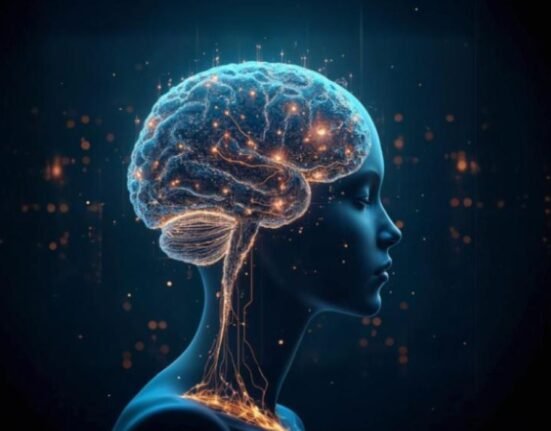Critical thinking is one of the most significant components of psychology since it allows for argument evaluation and accurate data processing, which leads to reliable conclusions. In today’s society, this vital skill is highly valued; thus, there is a great demand for it in the fields of education and health, in addition to the commercial sector. This article provides an overview of comprehensive techniques for developing critical thinking abilities. Findings from related essential psychological research and conceptual frameworks support these.
Cognitive Strategies in Critical Thinking
1. Active Reading and Listening
Active engagement with information is essential to engage in critical thinking. The acts of active reading include asking questions about the text, connecting it to what is known, and critically evaluating arguments that the author has offered. Similar to active listening in which there is full attention, comprehension and response to the speaker, content attention allows critical thinkers to be attentive to biases, inconsistencies, and gaps in logic.
2. Analysis and Evaluation
One also has to break up information, which is complex, and make assessments of parts’ relevance. For instance, in research, psychologists often study research findings by critically appraising methodologies, sample size, and statistical significance. All this analysis ensures that there are no assumptions but actual sound evidence for decision-making.
3. Inference and Deduction
Drawing logical conclusions from data is one of the fundamental parts of critical thinking. For example, while in therapy, psychologists will infer possible causes of their client’s behaviour by symptoms, environmental factors, and personal history. Interpretation and prediction of outcomes increase with more practice of inference and deduction.
4. Problem Solving
Puzzles, brain teasers, and strategy games are excellent problem-solving activities that significantly enhance analytical and creative thinking. Activities require the identification of patterns, consideration of choices, and implementation of viable solutions—skills that transfer directly to real-world applications.
Read More: Thinking and Problem-Solving
Metacognitive Strategies for Critical Thinking
1. Self-Reflection
Critical thinkers generally reflect on thought processes, biases, and assumptions. The reflection helps to expose the possible blind spots and enables a person to fine-tune their perspective. For example, psychologists conducting research generally reflect on their methodology so that it is objective and valid.
Read More: The Psychology of Self-Perception
2. Self-Questioning
It simply means that asking questions such as “What is the central argument?” or “What are the weaknesses of this perspective?” leads to more depth of understanding. Thus, it develops the habit of questioning other things, making a person get out of surface-level thinking and start finding more perspectives.
3. Self-Regulation
Cognitive regulation of controlling and monitoring processes, for example: attentional control and emotional responses, of critical thinking. A case study is a debate; the person can present arguments on logic rather than becoming defensive by controlling emotions.
Environmental and Social Strategies
- Perspectives Multiple: Exposure to other views, lifestyles, and experiences broadens knowledge and questions beliefs. For example, group discussions in psychology classes expose the students to different interpretations of a single theory, thereby helping them think critically.
- Cooperative Learning: Debates, case studies, or problem-solving from peers help develop critical thinking. The opportunity to share ideas, learn from fellow human beings, and being able to sharpen one’s rationale is offered by working collectively with fellow students.
- Feedback and Reflection: Giving people feedback improves their critical thinking abilities. Feedback allows one to reflect on the same, hence gaining insight into his or her weaknesses and how to work on the same.
Read More: Individual vs. Group Brainstorming: Which One Yields Better Ideas?
Training and Educational Techniques
- Courses in Critical Thinking: These are the skills that would be obtained after taking courses related to the elements of logic, philosophy, and science inquiry. In most aspects, what most courses focus on in critical thinking includes analyzing argumentation, evaluating evidence, and making rational conclusions.
- Case Studies and Scenarios: Real-life or hypothetical case studies are a good example of the practice of critical thinking. Students in psychology class, who learn case histories, are, therefore able to apply theory to practical application thus solving problems.
- Journal of Reflection: Keeping a journal of thoughts, reflections, and insights develops self-awareness and critical analysis. One can see how much his intellectual growth has been since he started writing in a journal.
Neuroscientific Techniques
- Neuroplasticity: Engaging in activities that promote neural plasticity promotes critical thinking. These activities stimulate parts of the brain that are linked to attention, memory, and reasoning.
- Near-Infrared Spectroscopy (NIRS): This portable, non-invasive technique monitors the change in blood oxygenation and serves to be useful in the investigation of critical thinking in a natural environment.
- Electroencephalography (EEG): EEG measures electrical activity in the brain, thus providing timely insight into neural responses in tasks involved in critical thinking such as evaluating assumptions or judging evidence.
- Transcranial Magnetic Stimulation (TMS): TMS temporarily activates parts of the brain to determine their role in reasoning and decision-making and therefore provides experimental insight into critical thinking processes.
- Functional Magnetic Resonance Imaging (fMRI): fMRI measures the blood flow changes that can help to determine which parts of the brain could be involved with tasks such as reasoning, decision-making, and problem-solving, for example, in the case of prefrontal cortex.
- Cognitive Load Measurement: This method measures mental effort by combining brain activity with physiological data while performing tasks that require critical thinking. Training on attention, working memory, and executive function promotes cognitive flexibility and problem-solving. For instance, one can be helped by brain training apps.
Read More: Recognizing and Overcoming the Overthinking Trap
Theoretical Grounding of Critical Thinking
Cognitive Theories
Cognitive theories of thought are concerned with mental processes and structures that enable a person to analyze, evaluate, and make decisions. These explain how the brain processes, organizes, and uses information to solve problems and reach conclusions. The most critical cognitive theories and concepts include the following:
1. Bloom’s Taxonomy of Cognitive Domains
The cognitive domain is defined by Benjamin Bloom as six levels that are progressively more complex. Benjamin Bloom categorized cognitive objectives into six levels: knowledge, comprehension, application, analysis, synthesis, and evaluation. Critical thinking involves higher-order thinking such as analysis and evaluation. Bloom’s Taxonomy is given to critical thinking as a higher-level cognitive activity, especially when one analyses, synthesizes and evaluates information.
2. Piaget’s Cognitive Development Theory
Jean Piaget believed that there is a progression through four stages of cognitive development: sensorimotor, preoperational, concrete operational, and formal operational. It emerges during the formal operational stage, at which one is capable of abstract reasoning and the critical analysis of complicated concepts. In the formal operational stage(12+ years), one is more critical of the situation. The one who can think hypothetically, assess evidence, and provide an independent judgment is usually found in this stage.
2. Vygotsky’s Sociocultural Theory
He thus mentioned the social interaction and cultural context of developing critical thinking. According to him, learning occurs in the “zone of proximal development,” which means that guidance through other people brings out higher-order thinking.
3. Information Processing Theory
This theory describes how critical thinking works about processing information in phases: attention, encoding, storage, and retrieval. The process of knowing how the mind operates about processing information aids in identifying the areas and enhancement of developing critical thinking skills.
4. Cognitive Load Theory
The theory was by John Sweller, explaining how the brain processes information under three types of cognitive load:
- Intrinsic Load: The complexity of the task.
- Extraneous Load: Irrelevant factors that make learning harder.
- Germane Load: Effort dedicated to processing and understanding information.
This theory defines the interplay between working memory and task complexity and their implications for critical thinking capabilities. It requires managing cognitive load effectively to focus on germane processes, such as evaluating arguments or solving problems. Some studies argue that critical thinking is cognitively demanding and, therefore, students have difficulty in the argumentation process because of cognitive overload. Others believe that critical thinking is biologically primary and cannot be taught but instead is the product of having sufficient knowledge in a given area that is held in long-term memory.
5. Metacognition
Metacognition is “thinking about thinking” and includes awareness and regulation of one’s cognitive processes. It has two components:
- Metacognition Knowledge: Knowing your cognitive strengths and weaknesses.
- Metacognition Regulation: Planning, monitoring, and evaluating cognitive tasks.
Metacognition is at the core of critical thinking since it enables the individual to monitor his or her reasoning, improve strategies, and adjust to new challenges.
6. Dual Process Theory
This theory sets out the existence of two forms of thinking:
- System 1 (Fast Thinking): Automatic, intuitive, and emotional.
- System 2 (Slow Thinking): Deliberate, logical, and analytical.
Human beings use critical thinking reflective and logical processes of trying to solve problems and review evidence-and is primarily a System 2 process.
7. Information Processing Theory
This theory describes how critical thinking works about processing information in phases: attention, encoding, storage, and retrieval. The process of knowing how the mind operates about processing information aids in identifying the areas and enhancement of developing critical thinking skills. The process of critical thinking comprises the following processes:
- Paying attention to relevant information
- Organizing knowledge in terms of schemas
- Reasoning for inferring
A good critical thinker manages information to come up with good conclusions effectively
8. Cognitive Flexibility Theory
This theory, by Spiro and colleagues, suggests that one has to adapt his or her thinking to the context and perspective. It calls for flexibility to view matters from multiple angles, re-evaluate knowledge, and then apply it to new contexts.
These cognitive theories are described as those underlying critical thinking and, thereby, tend to focus on higher-order thinking, self-regulation, and adaptability as contributing factors to this central skill.
Read More: The Approach Of Cognitive Psychology And Its Role In Mental Health
Theories of Critical Thinking
- Richard Paul’s Theory of Critical Thinking: Richard Paul defined it as the process of analyzing, evaluating, and creating arguments. He said challenging assumptions and finding bias were part of this ability. This framework provides intellectual standards such as clarity, accuracy, precision, and relevance as well as elements of reasoning such as purpose, questions, and evidence.
- Bloom’s Taxonomy: Benjamin Bloom categorized cognitive objectives into six levels: knowledge, comprehension, application, analysis, synthesis, and evaluation. Critical thinking involves higher-order thinking like analysis and evaluation.
- Halpern’s Theory of Critical Thinking: According to Diane Halpern, critical thinking is keen, logical, and creative thinking. In her model, it demands examination of the evidence, reliance on cognitive bias, and an open-minded attitude.
- Reflective Judgment Model: This model outlines stages of reasoning from reliance on personal beliefs (pre-reflective) to critical analysis of evidence (reflective thinking).
Theories Associated with Education
1. Constructivist Theory
The constructivist theory proposed by Jerome Bruner has problems with active learning and critical thinking. In this theory, the learners develop knowledge while interacting with the materials and through questioning and solving the problems.
2. Experiential Learning Theory
According to David Kolb, the learners develop critical thinking using direct experience and reflection. Other activities that help include internships and role-plays, in which theoretical concepts are transferred to practical actions. Kolb’s model focuses on what is learned from experience with application and reflection for critical judgment.
3. Social Constructivist Theory
According to Vygotsky and Barbara Rogoff, it needs to be developed by interacting with others and through other social means. Group activities encourage people to think and argue more critically. He emphasizes the need to have social interaction and collaborative learning to enhance critical thinking among learners. In Vygotsky’s Sociocultural Theory, he thus mentioned the social interaction and cultural context of developing critical thinking. According to him, learning occurs in the “zone of proximal development,” which means that guidance through other people brings out higher-order thinking.
4. Multiple Intelligences Theory Howard Gardner
Howard Gardner’s, Multiple Intelligences Theory, proposed that a person’s intelligence could not be solely based on one singular general ability but rather a combination of many distinct unique intelligences. This theory explains the vast differences in how people perceive and apply information; it significantly influences their styles of it. Among the eight intelligences are linguistic-verbal, body-kinesthetic, musical, logical-mathematical, interpersonal, intrapersonal, naturalistic, and visual-spatial.
According to Howard Gardner’s Theory of Multiple Intelligences, individual differences in it are based on strengths. For instance, a linguistic thinker is very good at articulating concepts and making sense, but a logical-mathematical thinker makes conclusions on the data by reasoning. Original, pattern-based solutions come from musical intelligence, and spatial thinkers envision and solve problems from all possible angles. According to him, it is a product of the way people process information with their various intelligences.
Read More: A Guide to Using Cognition for Effective Learning
Philosophical Theories
- Greek Philosophers: The roots of critical thinking were first established in Ancient Greece where Socrates focused on questioning and rational examination.
- Socrates founded systematic critical evaluation with his method of questioning the assumptions and engaging in dialogue. It was first developed in Ancient Greece by Socrates, who questioned authority and emphasized the role of evidence and rational analysis in living a meaningful life.
- Plato recorded Socratic dialogues, like the moral dilemma of escaping prison, which underscored reason and not blind obedience.
- Socratic Method: A cooperative method of argumentation that scrutinizes assumptions, tests beliefs, and depends on evidence to reach sound conclusions. This method, designed by Socrates, actually throws a series of deeply penetrating questions that challenge the very presupposition and thought, that remains the very basis of teaching, both in psychology and philosophy.
- Aristotle Founded the syllogisms or the base of deductive reasoning and inductive reasoning. He insisted that sound judgment and knowledge must be based on systematic inquiry and rational thought.
- Rationalism (René Descartes): Rene Was an advocate for scepticism and methodical doubt as means of discovering truth. Descartes’ famous dictum, “Cogito, ergo sum” (I think, therefore I am), points out the necessity of reasoning and it to know the existence.
- Empiricism (John Locke): Locke postulated that knowledge comes from sensory experience and that it involves the evaluation of empirical evidence.
- Pragmatism (John Dewey): He coined the term “critical thinking” in How We Think, associating it with intellectual inquiry and rational critique. According to him, Pragmatism emphasizes practical problem-solving and reflective thinking. Dewey thought that education should foster inquiry and critical reflection because these are skills necessary for democratic action.
- Kant’s Theory of Critical Thinking: Immanuel Kant said that it should be judged and integrated in opposition to established beliefs. His theories make independent thinking vital.
Read More: Cognitive Distortions 101: The Hidden Link Between Cognitive Distortions, Anxiety, and Depression
Practical Tips to Enhance Critical Thinking
- Challenge Assumptions: Routinely question your beliefs and consider other possible explanations.
- Seek Alternative Perspectives: Consult with others or material that may counter your thought.
- Analyzing Information: Consider sources in terms of credibility, relevance, and consistency.
- Reflection of Practice: Reflect on the decisions and identify areas of improvement.
- Problem-Solving: Engage in activities that require both analytical and creative thinking.
- Curiosity in Practice: Explore unknown subjects and ask questions to enhance knowledge.
- Mindful Listening: Listen attentively to people to understand other people’s perspectives.
- Write and Journal: One writes down ideas in the head to understand, think through, and hone them to perfection.
- Learn from Mistakes: Consider past mistakes to determine what went wrong and how to fix them.
- Read Widely: To broaden your perspective on the world, expose yourself to a variety of genres, cultures, and topics.
Conclusion
This process of cognition, metacognition, and practical strategies is very elaborated. Along with theoretical insights combined with the process of active learning, it would help one analyze the information, evaluate the arguments, and make an informed decision. This would help people grow lifelong skills in critical thinking and tackle complex challenges effectively.
References +
- Critical Thinking | Definition, Origins & Examples – Lesson | Study.com. (n.d.). study.com. https://study.com/academy/lesson/what-is-critical-thinking-definition-skills-meaning.html
- Tulgan, B., JD. (2023, March 15). Critical thinking is a whole lot harder than it looks. Psychology Today. https://www.psychologytoday.com/intl/blog/navigating-the-new-workplace/202303/master-the-3-basics-of-critical-thinking
- LibGuides: Psychology: Critical Thinking. (n.d.). https://libguides.vcc.ca/c.php?g=409119&p=3024984
- Martins, J. (2024, August 30). How to Develop Critical Thinking Skills in 7 Steps with Examples [2024] • Asana. Asana. https://asana.com/resources/critical-thinking-skills
- Well, T., PhD. (2023, September 29). Traditional tools and new technologies. Psychology Today. https://www.psychologytoday.com/intl/blog/the-clarity/202309/how-to-improve-your-critical-thinking-skills
- Post, B. (2024, April 24). Tips to develop critical thinking skills. Krmangalam. https://www.krmangalam.edu.in/tips-to-develop-critical-thinking-skills/
- Marr, B. (2024, February 20). 13 easy steps to improve your critical thinking skills. Forbes. https://www.forbes.com/sites/bernardmarr/2022/08/05/13-easy-steps-to-improve-your-critical-thinking-skills/
- Piaget vs. Vygotsky | Theory, Similarities & Differences – Lesson | Study.com. (n.d.). study.com. https://study.com/learn/lesson/piaget-vs-vygotsky-theories-differences-purpose.html













Leave feedback about this